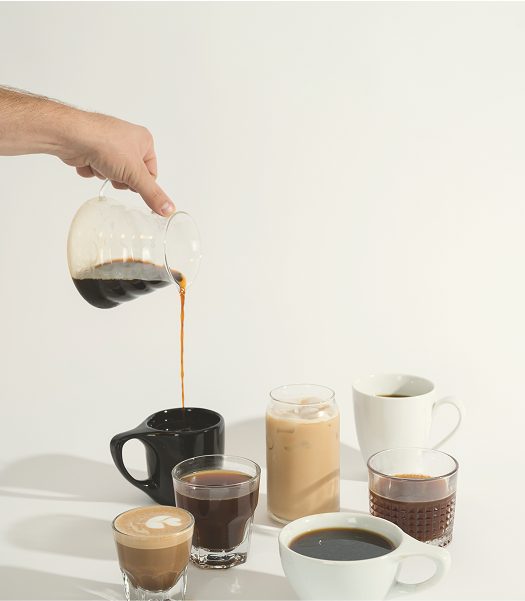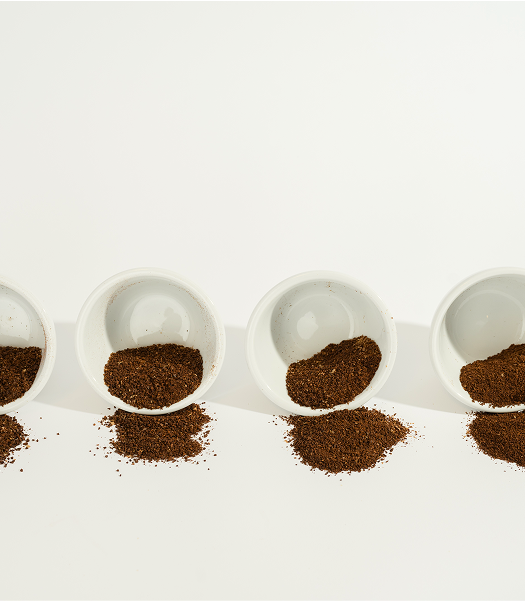Free Shipping on Orders Over $50
Coffee Flavor Profiles: A Practical Tasting Guide
Decode acidity, sweetness, body, and aroma—and learn how origin, roast, and brew method shape the flavors you love.
Coffee flavor profiles are the sum of variety, origin, processing, roast development, and brewing. The good news: anyone can calibrate their palate. This guide explains the major dimensions of flavor, what influences them, and how to build a lineup you’ll love—at home or on a professional menu.
The Four Big Dimensions
- Acidity: Brightness and lift—think citrus, berry, or tart apple. Not sourness when balanced.
- Sweetness: Natural sugars expressed as caramel, honey, ripe fruit. A sign of good ripeness and roast development.
- Body: Texture/weight—silky, syrupy, or tea-like.
- Bitterness & Finish: Structure and aftertaste; pleasant cocoa vs. harshness depends on extraction and roast.
How Origin & Process Shape Flavor
- Origin: Ethiopia/Kenya often deliver florals and citrus; Colombia balances red fruit and caramel; Brazil leans chocolate/nut.
- Processing: Washed = clean and articulate; natural = fruit-forward and fuller; honey = sweet middle ground.
- Altitude & climate: Higher elevations → denser beans → higher acidity and clarity.
Try contrasting origins from our rotating coffee collection to map your preferences quickly.
Roast Level & Flavor Development
- Light: Elevates origin character; higher perceived acidity; delicate florals.
- Medium: Balanced acidity and sweetness; versatile for many brew methods.
- Dark: Emphasizes roast notes (cocoa, smoke); reduced origin nuance; great in milk.
Brew Method & Extraction
- Pour-over: Clean, high clarity; great for nuance.
- French press: Full body, oils, deeper sweetness; control steep time to avoid bitterness.
- Espresso: Intense, concentrated; small adjustments swing flavor.
- Cold brew vs. iced coffee: Cold brew mutes acidity and boosts sweetness; iced preserves aromatics and brightness (see our explainer on the coffee blog).
Build a Personal Flavor Map (Home)
- Pick two contrasting coffees (e.g., Ethiopian washed vs. Brazilian natural).
- Brew both at the same ratio; change only one variable at a time (usually grind).
- Note acidity, sweetness, body, and finish; write 3–5 flavor words—not just “good.”
- Repeat weekly with new origins; keep a simple tasting log.
Keep fresh stock rolling with our coffee subscription so you can taste seasonality and roast intent.
Designing a Menu (Wholesale)
- Anchor blend: Chocolate-leaning, low-to-medium acidity; consistent for milk beverages.
- Rotating single origin: Showcase fruit/flower nuance; educate guests with changing notes.
- Cold program: A syrupy cold brew + a bright iced coffee for contrast.
- Training: Staff should describe acidity vs. sourness, and connect notes to origins and processes using posts on our coffee blog.
Troubleshooting Flavor
- Sour/under-extracted: Finer grind, higher temp, or longer contact time.
- Bitter/over-extracted: Coarser grind, cooler water, or shorter time. li>
- Flat: Check freshness, water quality, and ratio; try a brighter origin.
Example Profiles to Try
- Bright & floral: Ethiopian washed, light roast (jasmine, bergamot, lemon).
- Balanced & sweet: Colombian washed, medium roast (caramel, red apple, cocoa).
- Comfort & chocolate: Brazilian natural, medium-dark (milk chocolate, hazelnut).
FAQs
What determines coffee flavor most? A combination of origin, processing, roast development, and extraction. You taste the chain end-to-end.
Is acidity bad? No—pleasant acidity equals liveliness and structure. Sourness usually signals under-extraction or an imbalanced recipe.
How do I find my favorite profile? Taste side-by-side: a bright washed African vs. a chocolate-leaning Brazilian. Log notes and adjust grind/ratios.
Which roast level should I buy? Light for nuance; medium for balance; dark for roast-forward comfort—align with your brew method and milk use.
YIELD Coffee Roasters helps Cincinnati coffee lovers and partners navigate flavor with relational sourcing, thoughtful roasting, and training-backed support.





